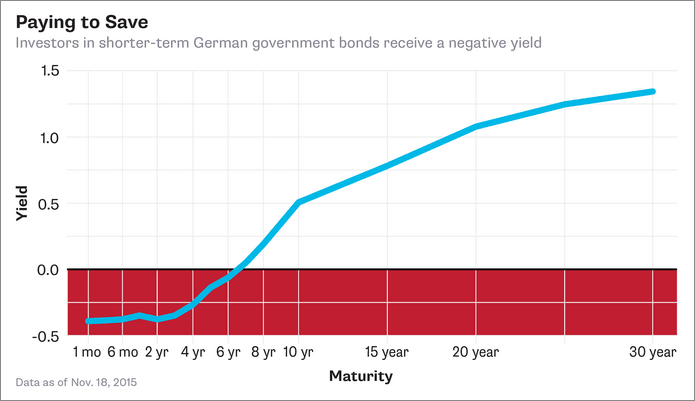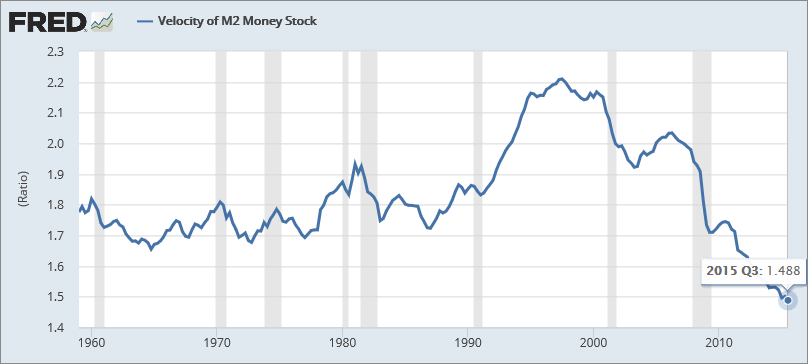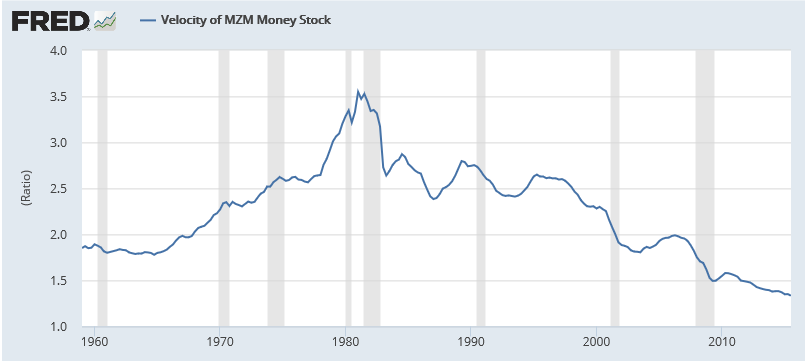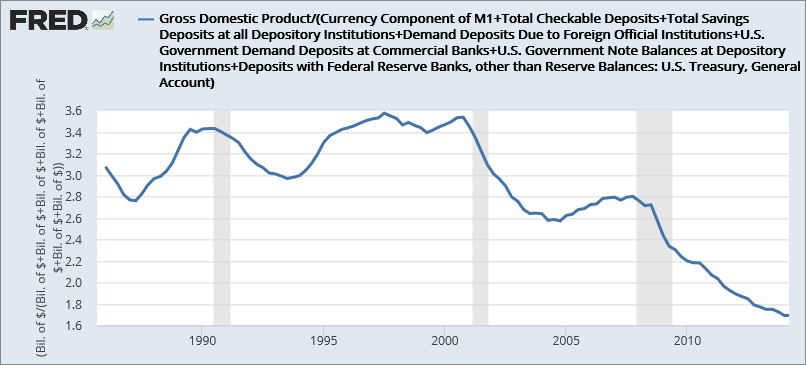Alternative Bank Schweiz (ABS), a small bank in Switzerland broke the negative interest rate on deposits barrier, CHARGING customers to cake their money. (emphasis in caps from the article).
The Alternative Bank Schweiz wrote to customers telling them they would face a -0.125 per cent rate on their money from 2016 – and a -0.75 per cent rate on deposits above 100,000 Swiss francs.
The move echoes the Swiss central bank’s -0.75 per cent negative deposit rate imposed on financial institutions placing money with it.
Sweden’s central bank also introduced negative rates, which currently stand at -0.35 per cent, while the European Central Bank introduced them in part with its -0.2 per cent overnight deposit rate.
The Bank of England’s chief economist Andy Haldane delivered a speech in September discussing how Britain could have to consider negative interest rates as an extreme measure in a future crisis.
The big Swiss banks passed on some of the pain from the Swiss central bank’s -0.75 per cent rate to their institutional clients, but Alternative Bank Schweiz is believed to be the first retail bank to hit savers with a charge.
The bank describes itself as an ethical organisation focused on backing firms investing in social and environmental projects.
With its balance sheet totaling nearly 1.6 billion Swiss francs last year, most of its activities are concentrated in cooperative housing projects, providing affordable housing and sustainable energy solutions, as well as organic farming.
Less Than Zero
Bloomberg offers a "quick take" on Less Than Zero.
Imagine a bank that pays negative interest. Depositors are actually charged to keep their money in an account. Crazy as it sounds, several of Europe’s central banks have cut key interest rates below zero and kept them there for more than a year. For some, it’s a bid to reinvigorate an economy with other options exhausted. Others want to push foreigners to move their money somewhere else. Either way, it’s an unorthodox choice that has distorted financial markets and triggered warnings that the strategy could backfire. If negative interest rates work, however, they may mark the start of a new era for the world’s central banks.
The Situation
With the fallout limited so far, policy makers are more willing to accept sub-zero rates. Having once said that the European Central Bank had hit the “lower bound,” President Mario Draghi signaled in October and November that the deposit rate could be cut even further into negative territory. The ECB became the first major central bank to venture below zero in June 2014, and it now charges banks 0.2 percent to hold their cash overnight. Sweden also has negative rates, Denmark used them to protect its currency’s peg to the euro and Switzerland moved its deposit rate below zero for the first time since the 1970s.
That means investors holding to maturity won’t get all their money back. Banks have been reluctant to pass on negative rates for fear of losing customers, though Julius Baer began to charge large depositors.
The Background
Negative interest rates are a sign of desperation, a signal that traditional policy options have proved ineffective and new limits need to be explored. They punish banks that hoard cash instead of extending loans to businesses or to weaker lenders. Rates below zero have never been used before in an economy as large as the euro area. While it’s still too early to tell if they will work, Draghi pledged during the height of Europe’s debt crisis in 2012 to do “whatever it takes” to save the area’s common currency, signaling the ECB’s willingness to be innovative. It chose to experiment with negative rates before turning to a bond-buying program like those used in the US and Japan.
The Argument
In theory, interest rates below zero should reduce borrowing costs for companies and households, driving demand for loans. In practice, there’s a risk that the policy might do more harm than good. If banks make more customers pay to hold their money, cash may go under the mattress instead. Janet Yellen, the US Federal Reserve chair, said at her confirmation hearing in November 2013 that even a deposit rate that’s positive but close to zero could disrupt the money markets that help fund financial institutions. Two years later, she said that a change in economic circumstances could put negative rates “on the table” in the US, and Bank of England Governor Mark Carney said he could now cut the benchmark rate below the current 0.5 percent if necessary.
Economic Distortions
That's actually a balanced synopsis by Bloomberg as far as it went.
But unlike Europe, the US has large money market funds that would be destroyed by negative rates. Banks may be able to hold out for a while by raising other fees, but money market funds would immediately be in trouble.
Listen to: Michael Lewitt: Negative Interest Rates Turning Capitalism on Its Head
Customers would withdraw money, put it into banks charging the lowest fees, stuff cash under the mattress, or open safe deposit boxes.
If rates get negative enough, there would be a run on the banks, but a run on money market funds would likely happen first.
Someone Has to Hold the Cash
The central bank thesis is to get people to spend the money. But note the absurdity. Someone must hold every dollar printed at all times.
If you buy a candy bar and eat it, or a coat and wear it, the store that sold those items to you has has the money. Mathematically, someone at all times must hold all the money.
What About Velocity?
Reader "Vince" has been bugging me to write about the velocity of money. Velocity purportedly measures the speed at which money circulates in the economy.
I have commented before on the absurdity of the velocity thesis, but this seems like a good time for a rehash.
Velocity = Value of transactions / supply of money
The value of transactions = price * transactions = GDP.
Thus, velocity is nothing more than GDP divided by money supply. Here is the equations, two ways.
V = PT / M
V = GDP / M
Right now, velocity is falling simply because money supply is increasing faster than GDP.
But what constitutes money supply?
M1, M2, MZM, base money, and true money supply all yield different measures of velocity.
M2 Velocity
M1 Velocity
MZM Velocity
TMS Velocity
So is velocity 1.7, 5.9, 1.5, 1.3 or something else?
If we rearrange the equation, GDP / Velocity = M.
Supposedly we know GDP but what do we plug into the equation for velocity to derive M? Can one independently measure velocity?
The answer to that question is a resounding no.
Since GDP = PT, GDP can rise if prices rise and GDP can go up if transactions go up. GDP can rise if transactions decline, provided prices rise enough. And GDP can rise if prices decline, provided transactions rise enough.
- Velocity can rise with rising prices
- Velocity can fall with rising prices
- Velocity can rise with increasing transactions
- Velocity can fall with increasing transactions
Conclusions
- Velocity has no life of its own.
- Velocity does not cause anything to happen.
- Velocity cannot be measured by any independent means.
Curiously, economists are concerned about "falling velocity" as if it means something other than the central banks are printing money that sits as excess reserves.
Inquiring minds may also be interested in the Frank Shostak's 2002 article Is Velocity Like Magic? Much of my understanding of velocity comes from that article.
Mario Draghi on Velocity
On November 20, Draghi Pledged to ‘Do What We Must’ to Boost Sluggish Inflation.
Mario Draghi has dropped his clearest hint yet that the European Central Bank is about to inject more monetary stimulus into the eurozone economy, brushing aside staunch opposition from Germany’s powerful Bundesbank.
The ECB president said yesterday that ECB policymakers would “do what we must to raise inflation as quickly as possible”. The remark echoed a promise Mr Draghi made during the region’s debt crisis in 2012 to do “whatever it takes” to save the single currency.
The ECB is widely expected to unleash a souped-up version of its €1.1tn quantitative easing package and consider cutting one of its benchmark rates deeper into negative territory.
“If we conclude that the balance of risks to our medium-term price stability objective is skewed to the downside, we will act by using all the instruments available within our mandate,” Mr Draghi said. “In particular, we consider the APP [asset-purchase program] to be a powerful and flexible instrument, as it can be adjusted in terms of size, composition or duration to achieve a more expansionary policy stance.”
He added: “The level of the deposit facility rate can also empower the transmission of [QE], not least by increasing the velocity of circulation of bank reserves.”
Question for Draghi
I laughed out loud at that last line. If QE increases velocity, then why is velocity declining in the US, in Europe, and in Japan?
By the way, bank reserves do not circulate. Reserves are deposits that are not lent out. One can even argue that money does not really circulate per se, as it has to be held at all times by someone.
Negative Interest Rates Crazy?
Let's return to this statement by Bloomberg: "Crazy as it sounds, several of Europe’s central banks have cut key interest rates below zero and kept them there for more than a year".
Yes, negative interest rates are crazy.
Link if video does not play: Crazy - Patsy Cline.
Desperation and Hubris
- Negative interest rates are a sign of central bank desperation.
- They are a sign central banks are clueless about how the economy really works.
- And they are a sign of extreme hubris coupled with extreme stubbornness as Japan has proven over the course of three decades that unconventional measures do not work as economists expect.
It's crazy to keep trying things that cannot possibly work, over and over again.











